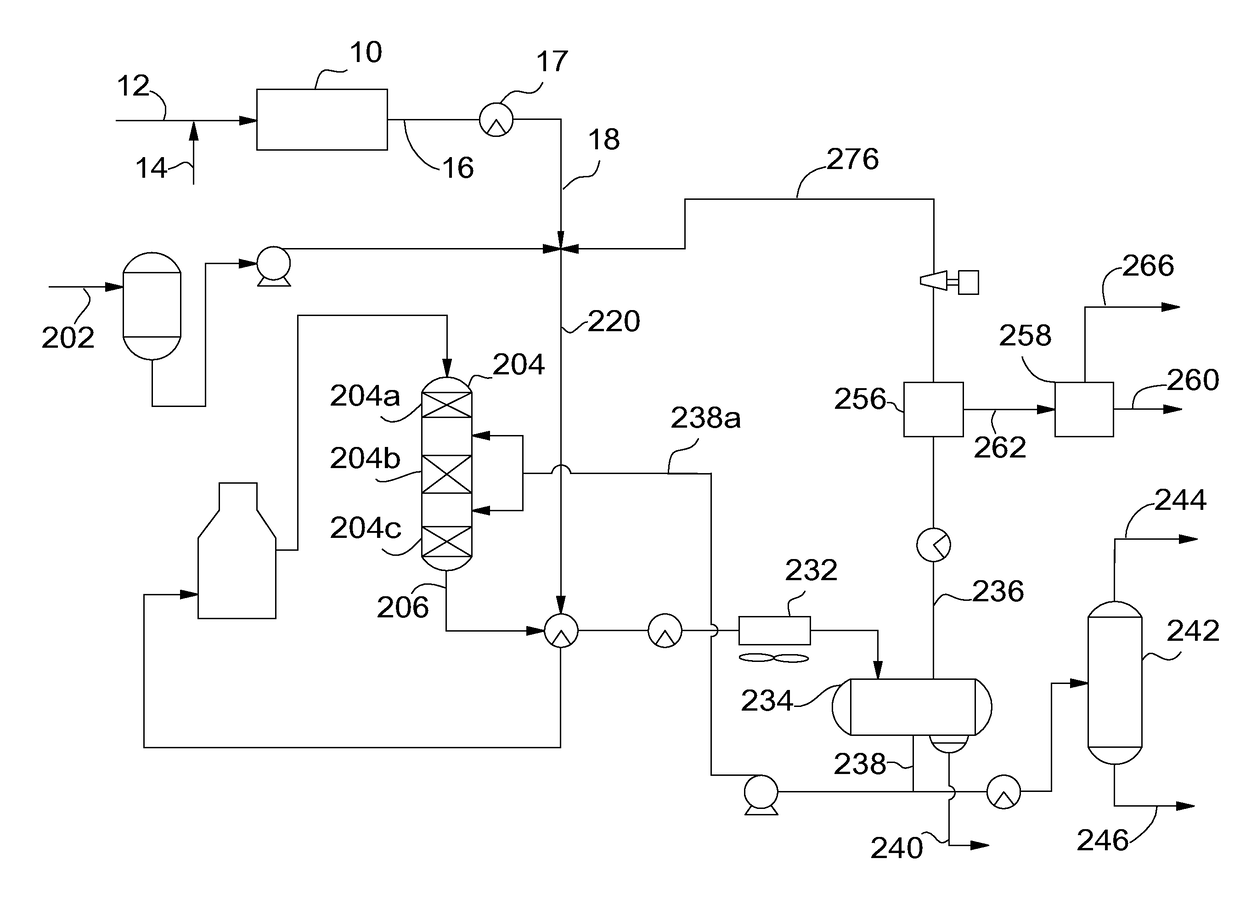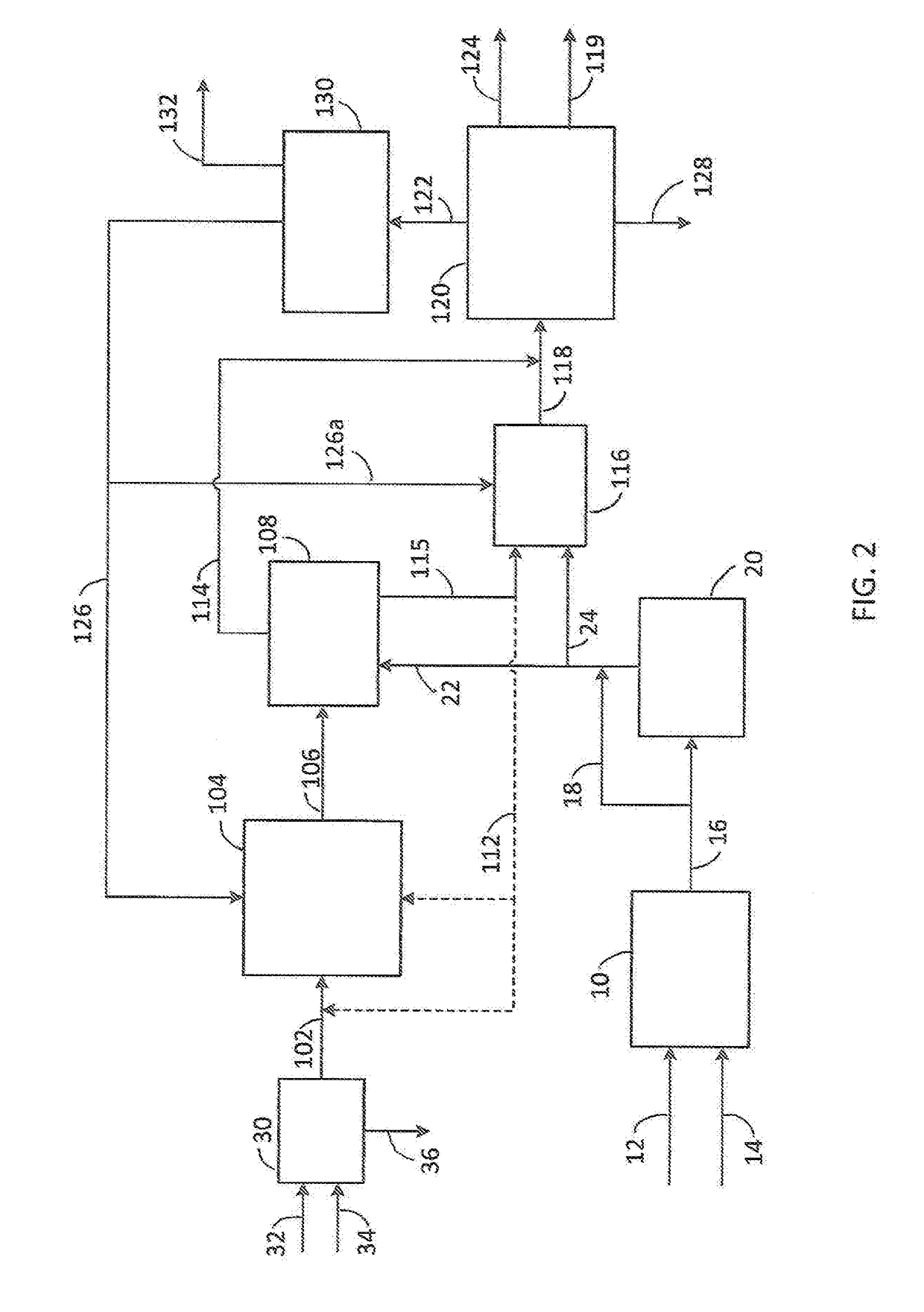Process for producing diesel fuel and jet fuel from biorenewable feedstocks
a biorenewable feedstock and jet fuel technology, applied in biofeedstock, hydrocarbon oil treatment, hydrocarbon distillation, etc., can solve the problems of reducing consuming excessive amounts of hydrogen, and affecting the appeal of renewable fuel, so as to reduce the consumption of hydrogen. , the effect of reducing the consumption of hydrogen
- Summary
- Abstract
- Description
- Claims
- Application Information
AI Technical Summary
Benefits of technology
Problems solved by technology
Method used
Image
Examples
Embodiment Construction
[0013]As stated, the present invention relates to a process for producing a hydrocarbon stream useful as diesel boiling range fuel or jet fuel from renewable feedstocks such as renewable feedstocks originating from plants or animals. Some of these feedstocks are known as biorenewable fats and oils. The term renewable feedstock is meant to include feedstocks other than those obtained from crude oil. The renewable feedstocks that can be used in the present invention include any of those which comprise glycerides and / or free fatty acids (FFA). Most of the glycerides will be triglycerides, but monoglycerides and diglycerides may be present and processed as well. Examples of these renewable feedstocks include, but are not limited to, canola oil, corn oil, soy oils, rapeseed oil, soybean oil, colza oil, tall oil, sunflower oil, hempseed oil, olive oil, linseed oil, coconut oil, castor oil, peanut oil, palm oil, mustard oil, jatropha oil, tallow, yellow and brown greases, lard, train oil, ...
PUM
| Property | Measurement | Unit |
|---|---|---|
| temperature | aaaaa | aaaaa |
| temperature | aaaaa | aaaaa |
| boiling range | aaaaa | aaaaa |
Abstract
Description
Claims
Application Information
 Login to View More
Login to View More - R&D
- Intellectual Property
- Life Sciences
- Materials
- Tech Scout
- Unparalleled Data Quality
- Higher Quality Content
- 60% Fewer Hallucinations
Browse by: Latest US Patents, China's latest patents, Technical Efficacy Thesaurus, Application Domain, Technology Topic, Popular Technical Reports.
© 2025 PatSnap. All rights reserved.Legal|Privacy policy|Modern Slavery Act Transparency Statement|Sitemap|About US| Contact US: help@patsnap.com



